Friday, 19th of January 2024 [113]
Man, it has been a long white since I posted in #FungiFriday community by @ewkaw ! In fact it’s been a few weeks since I posted at all!
You know what though? I decided not to kick myself about things I do and don’t do anymore. Guilt is one of the lowest frequencies there are and the one that my holistic healer is picking up on during each appointment, hence why I decided to let go of it, whenever I catch myself going down this slippery road.

Today is a frosty, yet very sunny morning here in UK. I saw the sun in my bedroom, but didn’t realise how nice it is outside until I went outside to take out the bin bag. I rushed back inside to make myself a cup of green tea, wrapped myself in couple layers of clothes and decided to spend the morning basking in the sun in front of my house.
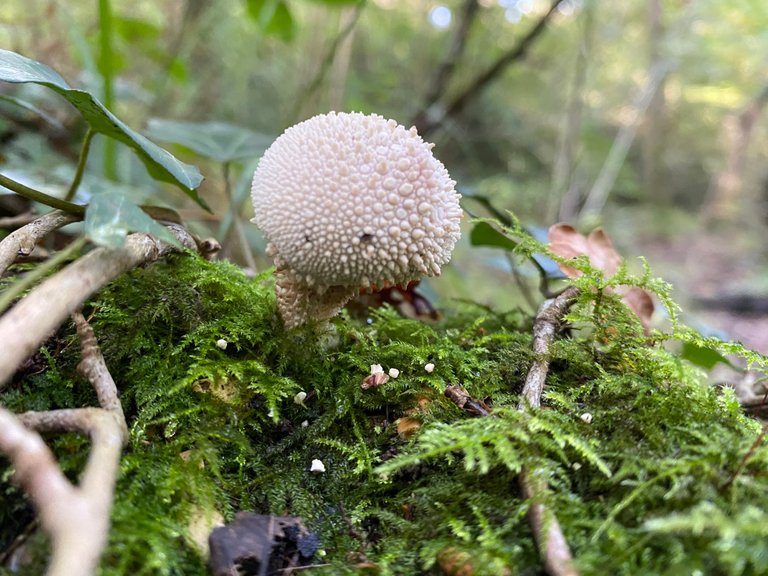
I took the book to read, but as I chatted to my friend first, my pre-workout started kicking in, I suddenly felt the rush of energy to write. I haven’t felt this rush for quite some weeks, so here I am, picking a few mushrooms from my gallery and showing up in Fungi Friday for the first time this year!
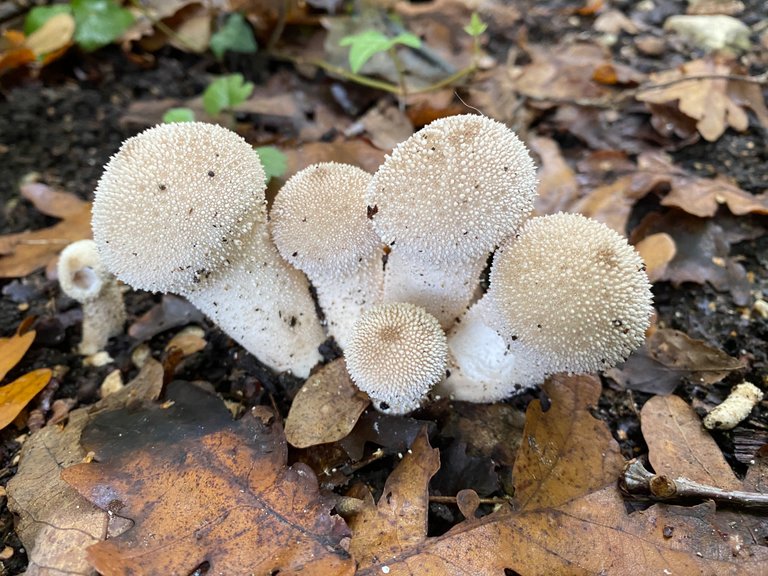
A while ago I had a moment of clarity and moved loads of my mushroom pictures to a separate folder, which makes is so much easier to pick them, rather than scrolling through my entire gallery.
Those puffballs captures have been waiting patiently for long enough to be shown! Precisely from 15th of October 2023! I stumbled across a nice bunch of them that day.

There are many types of true and false puffballs out there in Basidiomycota division, like Calvatia, Calbovista, Lycoperdon generas with many varieties of edible and non edible species in each on of them.
Quick google search revealed one of the most popular - Giant Puffbal - Calvatia Gigantea. In Fungi groups of fb I often see pictures of huge specimens like this that people post and often wondered why the ones I find in a nearby forest are never of such size!

Today the mystery has been solved! Those that I often find and capture and present to you today are not the same puffballs. Those monsters as google says on the picture above grow in meadows, fields and decidious forests, while the nearby forest is coniferous or mixed type at best, so it’s not so likely for me to find those here. Giant Puffballs also have no stalk (or leg) while those below clearly have them.
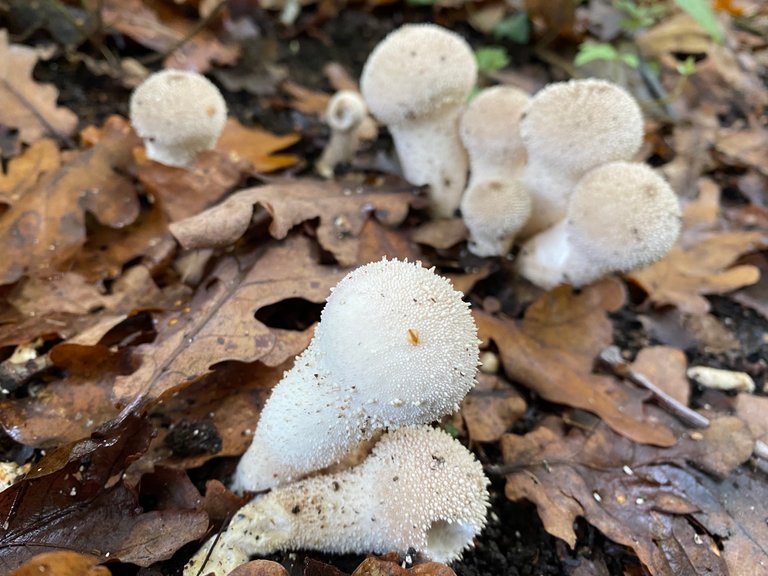
Further investigation lead me to the scientific name of Lycoperdon Perlatum, otherwise known as Common, Warted or Gem-studded Puffball. In the picture below you can clearly see where those common names come from. It does look like the head is covered in tiny gems or warts and it is quite common puffball to find around.
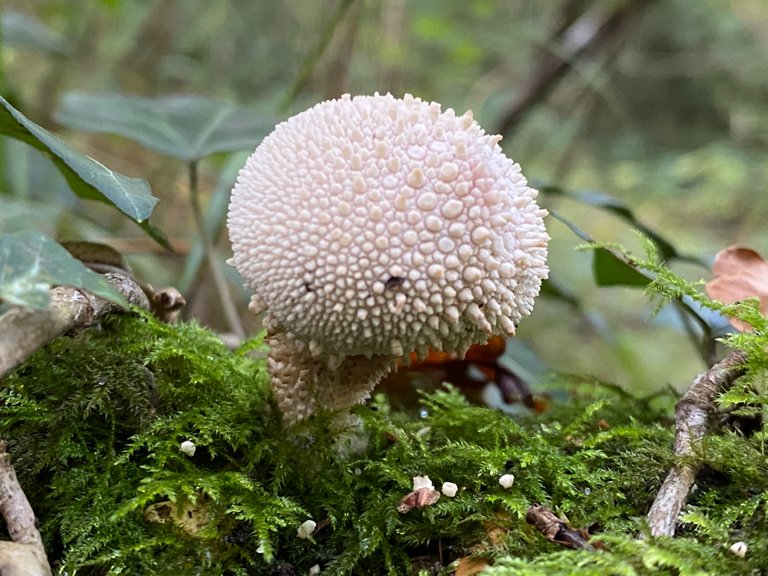
It is an edible mushrooms and sometimes called ‘Poor man’s sweetbread’ due to its texture. I remember taking a few of them back home to try when I first identified them as edible mushrooms and to be honest, I didn’t think much of it after frying thin slices of them in butter. They barely have any taste to be honest.

I’ve heard some people saying they’re a perfect, healthy pizza base if big enough specimen is found, though they might be talking of a Giant Puffball rather than the common puffball that I’m finding often. As I mentioned earlier - I’ve never found a big enough puffball that could serve as a pizza base or even sandwich base 😉
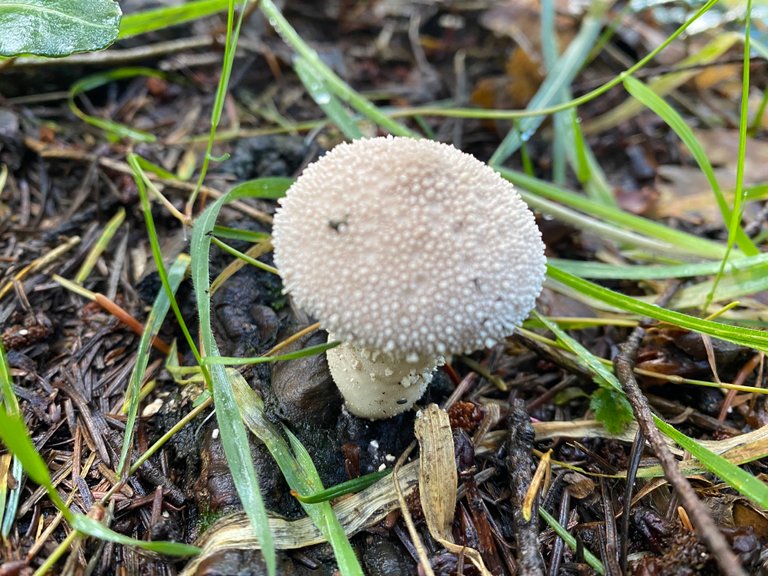
After picking and tasting them couple times, I decided to focus on other types of edible mushrooms to bring back home from my forest walks. Although reading about ways of cooking them I discovered some people use them as a replacement of dumplings. That surely sounds interesting to me, so maybe I’ll try and pick a few tiny puffballs next time I see them and throw them in my stew. Might be a nice experiment!
Speaking of the age - the Common Puffballs are only edible while they’re young and pure while inside when you slice them. Aged speciments change the colour to yellow’ish and that’s the clue they’re not that great to eat anymore. Remember - if in doubt, don’t pick and try eating them! As I mentioned, there are many different true and false puffballs.

The one below for example looks similar, but should never be eaten. One of the characteristics of puffballs are that they’re not spreading the pores around throughout their lifecycle from open caps, like most other mushrooms do. Their caps are round balls until at some point they burst open, spreading the pores around.
The Common Earthball below is also known Poison Puffball, which you can test by stepping on them. They’ll burst and spread the grey/black ash like spores around and don’t have that nice, white, solid flesh like that of a common puffball. Seeing this happening as you try to slice them I guess would be a clear clue this is not something you’d like to put in your mouth though I hope!
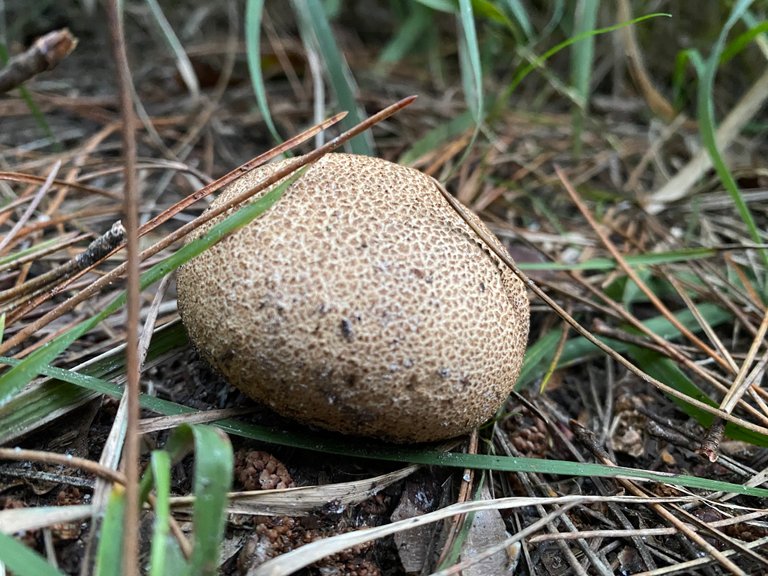
Another one of those sunny Fridays I will share more pictures of that Poison Puffball with you all!





| Camera: | iPhone11 |
|---|---|
| Photographer: | @fantagira |





